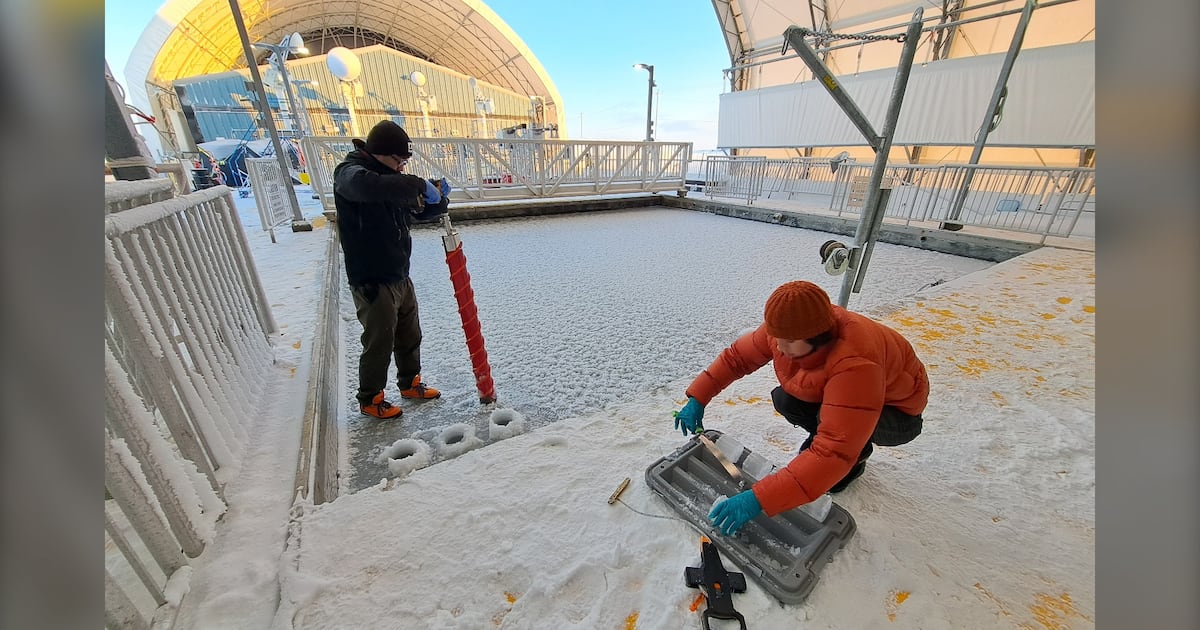Science
Churchill Marine Observatory Marks One Year of Arctic Research

A multidisciplinary research facility in Churchill, Manitoba, is celebrating its first anniversary, aiming to provide insights into complex Arctic science challenges. The Churchill Marine Observatory (CMO), which officially opened on August 27, 2024, focuses on addressing significant questions related to the socioeconomic implications of environmental changes in the Arctic region.
Dr. Feiyue Wang, project lead at the University of Manitoba and a professor at the university’s Clayton H. Riddell Faculty of Environment, Earth, and Resources, emphasized that the CMO has positioned Manitoba as a key player in marine research. The facility, which has an investment of approximately $45 million, enables comprehensive studies by drawing in seawater from both the Hudson Bay and the mouth of the Churchill River.
This unique setup allows researchers to conduct experimental studies to assess various scenarios as the Hudson Bay environment undergoes rapid changes. Dr. Wang stated, “This kind of arrangement allows us to do experimental studies, to study different scenarios… and start to gain the knowledge to prepare the region.” His background in aquatic chemistry equips the CMO to explore critical issues such as risk reduction and mitigation, particularly in responding to oil spills.
Integral to the observatory’s operations are sensors deployed along the bottom of the Churchill River and Hudson Bay. These sensors facilitate the monitoring of both physical and biological water properties. The research vessel William Kennedy enhances the CMO’s capabilities by providing mobility for sampling and monitoring efforts.
During its inaugural year, the CMO has supported three significant research projects from November 2024 to February 2025. One prominent project focused on understanding the initial stages of thin ice formation, done in collaboration with researchers from Denmark. Another study examined the potential for natural microorganisms to degrade oil in ice-covered waters in the event of a spill. Dr. Wang noted that data from this research, led by a colleague, is currently being analyzed, with plans for further study this winter.
Looking to the future, Dr. Wang expressed a desire for increased engagement with Indigenous researchers and community members. He highlighted the importance of local involvement, stating, “Folks who live there, who call that region home, are the ones who are going to be more invested in it.” The CMO has already integrated community participation to some extent, but Dr. Wang hopes to see this become a more prominent aspect of the facility’s research direction.
As the CMO approaches its one-year milestone, it stands as a beacon of scientific inquiry in the Arctic, poised to make significant contributions to understanding the region’s rapidly changing environment.
-

 Science3 months ago
Science3 months agoToyoake City Proposes Daily Two-Hour Smartphone Use Limit
-

 Top Stories3 months ago
Top Stories3 months agoPedestrian Fatally Injured in Esquimalt Collision on August 14
-

 Health3 months ago
Health3 months agoB.C. Review Reveals Urgent Need for Rare-Disease Drug Reforms
-

 Technology3 months ago
Technology3 months agoDark Adventure Game “Bye Sweet Carole” Set for October Release
-

 World3 months ago
World3 months agoJimmy Lai’s Defense Challenges Charges Under National Security Law
-

 Lifestyle3 months ago
Lifestyle3 months agoVictoria’s Pop-Up Shop Shines Light on B.C.’s Wolf Cull
-

 Technology3 months ago
Technology3 months agoKonami Revives Iconic Metal Gear Solid Delta Ahead of Release
-

 Technology3 months ago
Technology3 months agoApple Expands Self-Service Repair Program to Canada
-

 Technology3 months ago
Technology3 months agoSnapmaker U1 Color 3D Printer Redefines Speed and Sustainability
-

 Technology3 months ago
Technology3 months agoAION Folding Knife: Redefining EDC Design with Premium Materials
-

 Business3 months ago
Business3 months agoGordon Murray Automotive Unveils S1 LM and Le Mans GTR at Monterey
-

 Technology3 months ago
Technology3 months agoSolve Today’s Wordle Challenge: Hints and Answer for August 19









